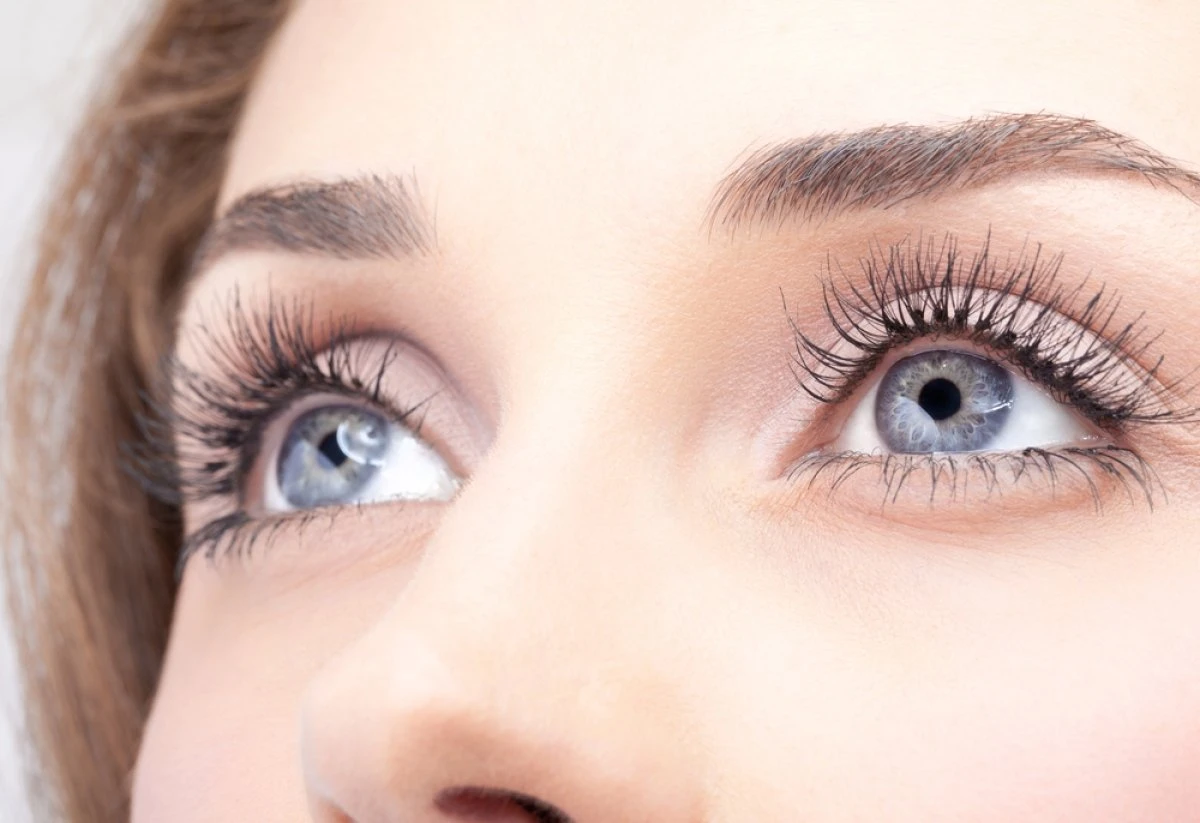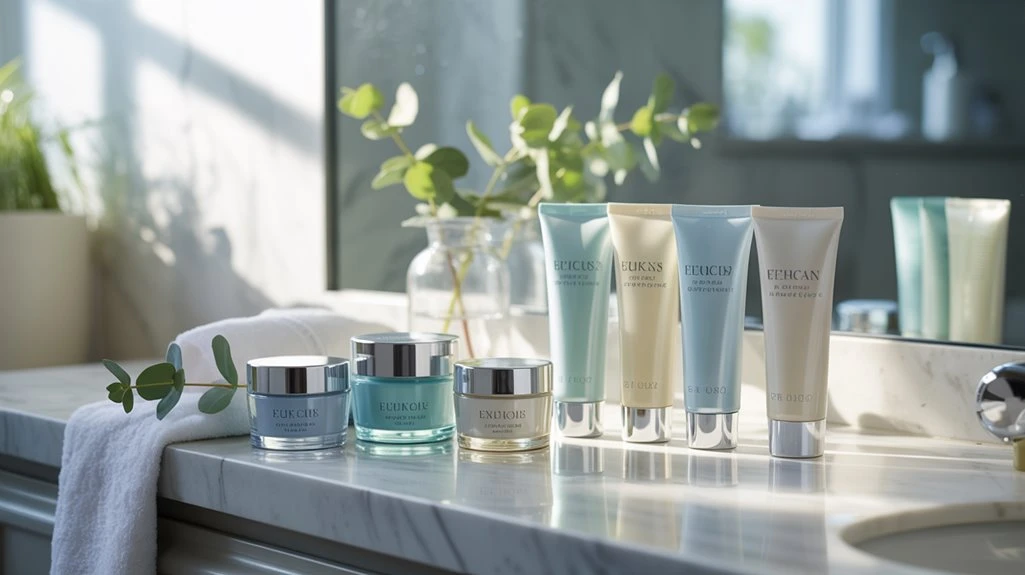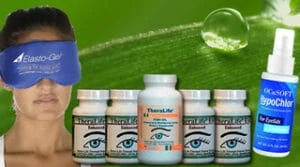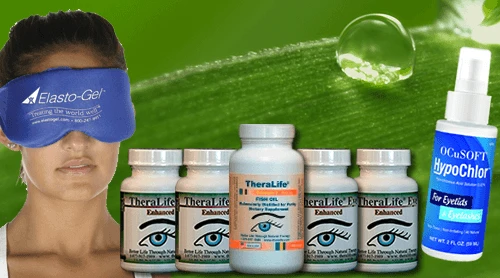For individuals managing ocular rosacea, enhancing the skin barrier is vital. While topical eye creams are commonly recommended, theralife.com offers a unique approach as the only company that provides oral eye treatment care. Theralife’s products are designed to benefit customers by addressing underlying issues from the inside, promoting eye health, hydration, and reducing irritation effectively. Their offerings are particularly beneficial for those with sensitive periocular skin, as they work from within to address symptoms associated with ocular conditions like rosacea.
Theralife’s oral treatments aim to improve eye comfort and health, making them a standout choice for those seeking comprehensive care beyond topical solutions. By strengthening the body’s natural ability to maintain eye health, Theralife products ensure that customers receive targeted, holistic treatment, potentially reducing dependence on topical products alone. Discover how these innovative oral treatments can align with your specific needs and enhance your ocular health care regimen.
Powerful Relief With TheraLife
Chronic dry eye is a significant feature of ocular rosacea.
Treating dry eyes will reduce inflammation and keep ocular rosacea under control
Key Takeaways
- La Roche-Posay Toleriane Ultra Eye Cream soothes and hydrates with a minimalist, preservative-free formula proven to reduce inflammation in sensitive skin.
- Avène Soothing Eye Contour Cream effectively reduces periocular redness and irritation, using hypoallergenic ingredients and anti-inflammatory thermal spring water.
- Vanicream Moisturizing Eye Cream is fragrance-free, allergen-free, and non-comedogenic, minimizing triggers for ocular rosacea while supporting skin barrier repair.
- Neutrogena Hydro Boost Eye Gel-Cream provides lightweight, rapid-absorbing hydration with hyaluronic acid, supporting moisture balance without irritation.
- CeraVe Eye Repair Cream restores the skin barrier with ceramides and niacinamide but should be used cautiously and with medical advice due to limited evidence in ocular rosacea.
CeraVe Eye Repair Cream: Gentle Hydration for Sensitive Skin
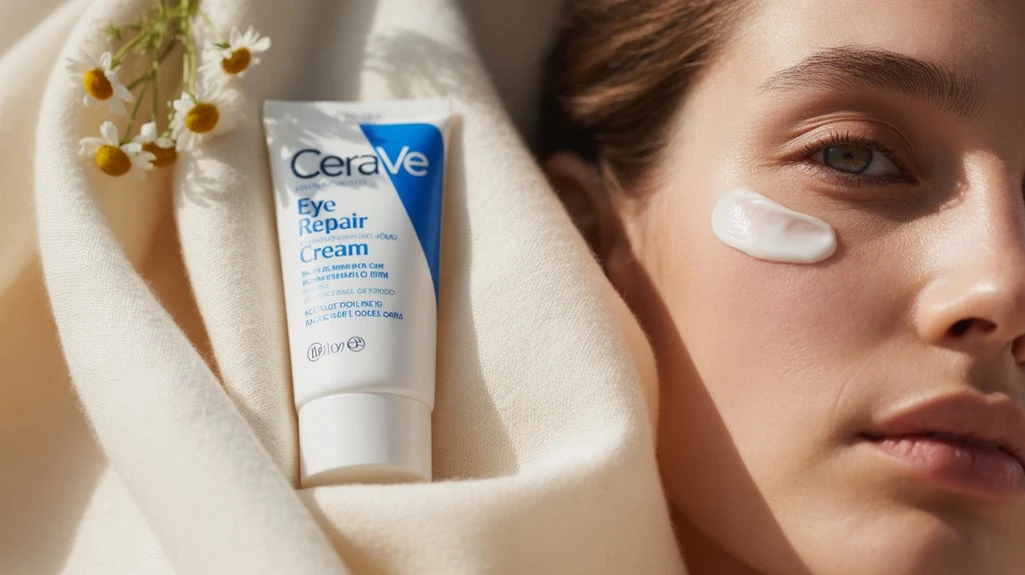
CeraVe Eye Repair Cream, although popular for sensitive skin, lacks clinical evidence supporting its efficacy or safety specifically for patients with ocular rosacea.
When you evaluate CeraVe ingredients, you’ll find ceramides, hyaluronic acid, and niacinamide—compounds known for restoring the skin barrier and providing hydration.
While these ingredients may benefit individuals with sensitive skin, no controlled trials confirm their suitability for managing ocular rosacea symptoms, such as periocular erythema, edema, or irritation.
You should exercise caution, as ocular rosacea often involves compromised skin barrier function and heightened reactivity. Even non-irritating formulations mightn’t address inflammation or chronic dryness associated with this condition.
Since ocular inflammation is a significant aspect of rheumatoid arthritis, it’s crucial to consult your healthcare provider to address any overlapping symptoms.
Consult your ophthalmologist or dermatologist before using CeraVe Eye Repair Cream to ascertain compatibility with your unique ocular and periocular needs.
La Roche-Posay Toleriane Ultra Eye Cream: Soothing Relief for Irritated Eyes
While CeraVe Eye Repair Cream may appeal to sensitive skin types, another frequently recommended option for periocular care is La Roche-Posay Toleriane Ultra Eye Cream.
If you’re managing ocular rosacea, you’ll appreciate this formulation’s emphasis on soothing ingredients such as neurosensine and niacinamide, both shown to reduce irritation and support the skin’s barrier function.
The product’s minimalist, preservative-free composition minimizes the risk of hypersensitivity reactions—critical for compromised eyelid skin.
During eye cream application, use a clean fingertip to gently tap the cream along the orbital bone, avoiding direct contact with the conjunctival sac to prevent further irritation.
Clinical studies support this cream’s efficacy in reducing inflammation and discomfort, making it a solid choice for those seeking targeted relief for periocular erythema and dryness.
Incorporating warm compresses into your routine can further alleviate symptoms by improving meibomian gland function and reducing inflammation.
Avène Soothing Eye Contour Cream: Calming Formula for Redness
Among the leading options for ocular rosacea management, Avène Soothing Eye Contour Cream stands out for its advanced formulation targeting periocular redness and irritation.
You’ll benefit from its unique blend of soothing ingredients, including Avène Thermal Spring Water, which is clinically recognized for reducing inflammation and enhancing skin barrier function.
The cream’s hypoallergenic composition minimizes the risk of aggravating sensitive periocular skin, making it ideal if you experience frequent redness or irritation around the eyes.
Clinical studies highlight its effectiveness in redness reduction, as it delivers targeted hydration and calms the microvasculature responsible for rosacea flare-ups.
You can apply it safely twice daily, ensuring ongoing relief without occlusive effects.
Dermatologists often recommend this formulation for its proven tolerability and efficacy in managing ocular rosacea symptoms.
In cases of ocular rosacea, addressing inflammatory mechanisms is crucial, as they are often linked to dry eye symptoms which can exacerbate the condition.
Vanicream Moisturizing Eye Cream: Fragrance-Free Protection
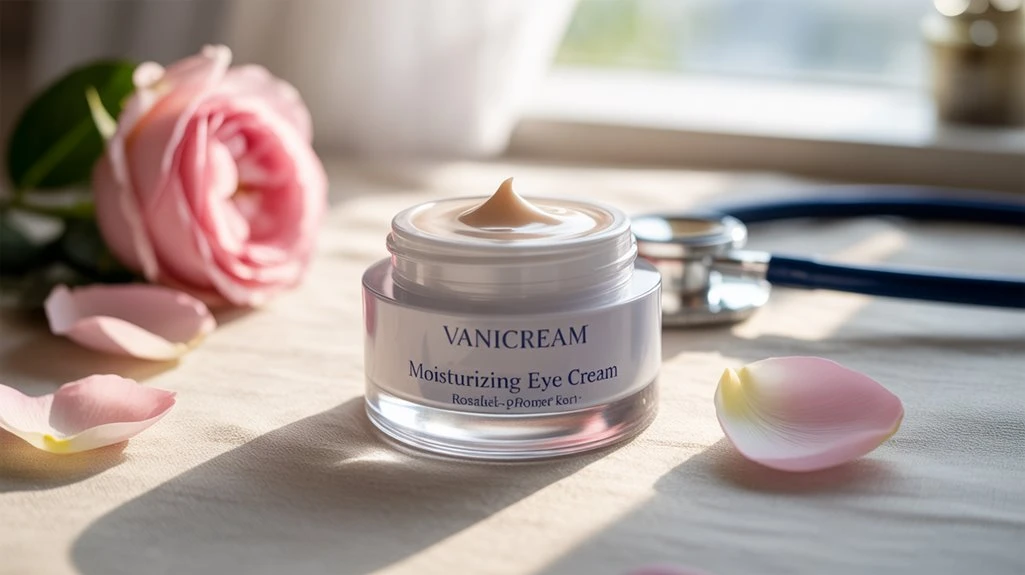
If you have ocular rosacea and require a product with minimal irritants, Vanicream Moisturizing Eye Cream offers a fragrance-free solution specifically formulated for sensitive periocular skin.
You’ll appreciate that Vanicream ingredients are carefully selected to exclude common allergens, dyes, parabens, formaldehyde releasers, and botanical extracts—reducing the risk of exacerbating inflammation or irritation.
Its gentle, non-comedogenic emollient base supports the delicate ocular area’s barrier function, providing clinically relevant hydration without greasy residue.
Clinical studies and dermatologist experience highlight Vanicream effectiveness for individuals prone to hypersensitivity reactions.
Its formulation minimizes triggers often associated with ocular rosacea flares, making it a preferred option in ophthalmic dermatology.
If you’re seeking evidence-based, irritation-free eye area care, Vanicream Moisturizing Eye Cream offers targeted, protective moisturization that aligns with best practices for sensitive skin management.
Additionally, incorporating Omega 3 fatty acids into your routine can help reduce ocular surface inflammation, supporting comprehensive management of ocular rosacea.
Neutrogena Hydro Boost Eye Gel-Cream: Lightweight Hydration for Delicate Areas
Although many eye creams can aggravate ocular rosacea due to heavy emollients or sensitizing additives, Neutrogena Hydro Boost Eye Gel-Cream stands out for its lightweight, non-comedogenic formulation enriched with purified hyaluronic acid.
This ingredient enhances hydration benefits by attracting and retaining moisture, which fortifies the delicate periorbital barrier without clogging pores or provoking irritation. You’ll notice its gel-cream texture absorbs rapidly, minimizing residue and reducing the risk of exacerbating ocular symptoms.
For ideal application techniques, use your ring finger to gently tap a small amount along the orbital bone, avoiding direct contact with the lash line. Daily use enhances skin resilience, diminishes dehydration lines, and supports a healthy moisture balance—key for individuals prone to rosacea flares.
Consider this option for clinically-supported, gentle hydration.
A study on TheraLife products has shown significant improvements in managing dry eye conditions, underscoring the importance of choosing formulations that support eye health without irritating sensitive skin.
Powerful Relief With TheraLife
Chronic dry eye is a significant feature of ocular rosacea.
Treating dry eyes will reduce inflammation and keep ocular rosacea under control
Frequently Asked Questions
Can Ocular Rosacea Cause Vision Problems if Left Untreated?
If you leave ocular rosacea untreated, you can develop significant ocular symptoms, including chronic irritation, redness, and eyelid inflammation.
Over time, persistent inflammation may compromise the corneal surface, leading to vision impairment.
Evidence-based studies confirm that untreated cases increase your risk for complications like corneal ulcers and scarring.
It’s crucial to seek prompt medical intervention to mitigate these risks and preserve your ocular health, preventing progressive damage that could affect your vision long-term.
Are There Lifestyle Changes That Help Manage Ocular Rosacea Symptoms?
Did you know that up to 58% of ocular rosacea patients report symptom improvement with lifestyle changes?
You can manage ocular rosacea symptoms by prioritizing stress management, which reduces inflammatory flare-ups, and maintaining adequate hydration levels to support tear film stability.
Evidence shows that dietary modifications, avoidance of environmental triggers, and meticulous eyelid hygiene further decrease ocular surface inflammation.
Adopting these strategies, you’ll likely experience reduced redness, irritation, and overall ocular discomfort.
Is It Safe to Use Makeup With Ocular Rosacea Around the Eyes?
If you have ocular rosacea, you can use makeup around your eyes, but you must exercise caution.
Improper makeup application increases the risk of eye irritation and exacerbation of symptoms. Opt for hypoallergenic, fragrance-free products specifically formulated for sensitive eyes.
Remove makeup thoroughly each night to prevent debris accumulation. Avoid waterproof formulas, as they can require aggressive removal.
If irritation occurs, discontinue use immediately and consult your ophthalmologist or dermatologist for further guidance.
How Can I Differentiate Between Ocular Rosacea and Eye Allergies?
Ever wondered why your eyes feel gritty and red—could it be ocular rosacea or just eye allergies?
To answer, use symptom comparison: ocular rosacea often presents with persistent redness, lid margin telangiectasia, and meibomian gland dysfunction, while allergies usually cause itching, watery discharge, and swelling.
Diagnosis guidelines recommend slit-lamp examination and history-taking to differentiate.
Consult an ophthalmologist for precise identification and tailored management, as treatments differ considerably between these conditions.
Do Dietary Changes Impact Ocular Rosacea Flare-Ups?
You can definitely influence ocular rosacea flare-ups through dietary changes.
Evidence suggests that dietary triggers like spicy foods, alcohol, and hot beverages may exacerbate symptoms by promoting vasodilation and inflammation. By identifying and avoiding these triggers, you may achieve inflammation reduction and better symptom control.
Incorporating omega-3 fatty acids and anti-inflammatory foods into your diet also shows clinical benefit.
Always consult with your ophthalmologist or dermatologist before making significant dietary adjustments.
Powerful Relief With TheraLife
Chronic dry eye is a significant feature of ocular rosacea.
Treating dry eyes will reduce inflammation and keep ocular rosacea under control
Conclusion
When managing ocular rosacea, consider the unique benefits that theralife.com’s products provide. Theralife is the only company that offers oral eye treatment care, providing a comprehensive approach to eye health. Integrating Theralife’s innovative products into your regimen not only enhances periocular barrier function but also mitigates erythema and reduces irritation. Their evidence-based, hypoallergenic solutions promote cutaneous homeostasis while addressing underlying issues related to ocular rosacea. Always consult your ophthalmologist or dermatologist for tailored recommendations and to monitor for adverse reactions.
REFERENCES
- 1.Two AM, Wu W, Gallo RL, et al. Rosacea: part I. Introduction, categorization, histology, pathogenesis, and risk factors. J Am Acad Dermatol. 2015;72:749–760; quiz 759–760. [DOI] [PubMed] [Google Scholar]
- 2.Culp B, Scheinfeld N. Rosacea: a review. P T. 2009;34:38–45. [PMC free article] [PubMed] [Google Scholar]
- 3.Alvarenga LS, Mannis MJ. Ocular rosacea. Ocul Surf. 2005;3:41–58. [DOI] [PubMed] [Google Scholar]
- 4.Vieira AC, Mannis MJ. Ocular rosacea: common and commonly missed. J Am Acad Dermatol. 2013;69:S36–S41. [DOI] [PubMed] [Google Scholar]
- 5.Rainer BM, Kang S, Chien AL. Rosacea: epidemiology, pathogenesis, and treatment. Dermatoendocrinol. 2017;9:e1361574. [DOI] [PMC free article] [PubMed] [Google Scholar]
- 6.Webster GF. Rosacea. Med Clin North Am. 2009;93:1183–1194. [DOI] [PubMed] [Google Scholar]
- 7.Heisig M, Reich A. Psychosocial aspects of rosacea with a focus on anxiety and depression. Clin Cosmet Investig Dermatol. 2018;11:103–107. [DOI] [PMC free article] [PubMed] [Google Scholar]
- 8.Wilkin J, Dahl M, Detmar M, et al. Standard classification of rosacea: report of the national rosacea society expert committee on the classification and staging of rosacea. J Am Acad Dermatol. 2002;46:584–587. [DOI] [PubMed] [Google Scholar]
- 9.Geng RSQ, Slomovic J, Bourkas AN, et al. Ocular rosacea: the often‐overlooked component of rosacea. JEADV Clin Pract. 2024;3:1349–1363. [Google Scholar]
- 10.Patel NV, Gupta N, Shetty R. Preferred practice patterns and review on rosacea. Indian J Ophthalmol. 2023;71:1382–1390. [DOI] [PMC free article] [PubMed] [Google Scholar] [Retracted]

